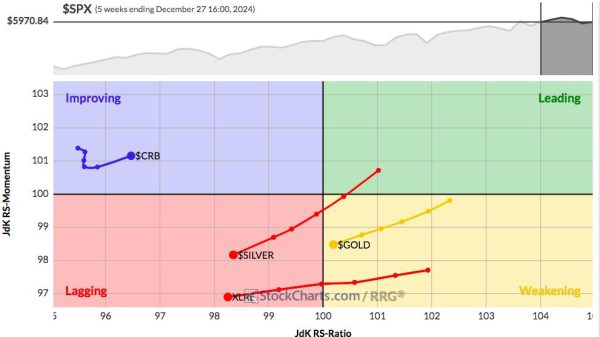Is your recruitment and talent management process backed by data?
If not, you could miss opportunities to make better, informed decisions and develop evidence-based strategies.
Recruitment and talent management are critical parts of your company because they help ensure that the right people are in the appropriate roles.
The question is, how do you know your current hiring and talent management processes get you the right people for each role and improve your existing strategies effectively?
That’s where analytics comes in.
Data and advanced analytical techniques can help you uncover insights to optimize recruitment and talent management processes.
Workforce analytics can give you the data you need to improve and optimize your hiring and talent management processes, including providing ways to be a stellar recruiting manager.
Continue reading to learn more about how to use analytics to improve your recruitment and talent management efforts.
Let’s get right to it.
Workforce analytics: An overview
Before diving into the tips and tricks for using analytics for a better recruitment and talent management process, let’s answer the question: what is workforce analytics?
Workforce analytics is using data and analytical techniques to understand and improve the performance of a company’s workforce.
Workforce analytics can include analyzing data on employee demographics, job roles, skills, and performance to identify trends and patterns to inform decision-making.
Some common applications of workforce analytics include the following:
Identifying the skills and capabilities most important for success in various job roles.
Analyzing employee performance data to determine the factors that can predict success or areas for improvement.
Developing and evaluating the effectiveness of talent acquisition, development, and retention strategies
Assessing the impact of various Human Resource (HR) policies and practices on employee engagement and performance.
Spotting opportunities for improving efficiency and productivity within your company’s workforce.
The main goal of workforce analytics is to use data to inform decision-making and improve employee and overall company performance.
How to leverage analytics for talent acquisition and management
How you use analytics for your recruitment and talent management processes depends on your goals, resources, and data.
The tips below outline several ways to use analytics to help refine and amplify your talent recruitment and management efforts.
1. Use data analytics to eliminate bias or prejudice in recruitment
Humans often make biased decisions in recruitment, whether consciously or not.
Data, on the other hand, does not.
Data doesn’t discriminate against an applicant’s gender, age, color, or marital status, making analytics a more objective and fair approach to talent hiring.
According to survey data, 62% of job seekers are more likely to apply for a job if a company if openly committed to improving inclusion and diversity in the workforce.
With analytics, your hiring managers can use facts and statistics as a basis for judgment and recruitment, preventing prejudice during the hiring process.
2. Utilize analytics to predict top performers
One of the best ways to determine whether an employee will perform well in your company is to look at analytics data.
After all, candidates who graduated from top schools don’t always automatically become top-performing employees.
Data even shows that only 35% of bosses believed that key players generally come from top schools.
Analyze data, such as educational background, managers, skill sets, and years in a company, to help determine similarities among key players.
You can also look at other data, such as communication skills and personal networks.
Using analytics allows you to dispel myths and guesswork about the qualities of a top performer. It makes determining key players fairer, and you can use the uncovered trends to design an incentive program for top performers strategically.
3. Leverage data analytics to save time
Talent recruitment can be ongoing, especially in high-turnover roles such as customer service and sales.
Like most companies, you likely focus more on retention than constantly bringing in new people.
After all, hiring new talent can cost more money, time, and resources in the long run.
Implement data analytics to assess your time-to-hire information or the moment your eventual hired talent entered your pipeline to the time they accepted the job offer.
Analyzing your time-to-hire data can give you valuable insights into how well you use your time and money for talent recruitment.
For instance, you can analyze your company’s average time-to-hire for a specific position and measure it against your record.
The analysis can tell you whether you:
Take too long
Use slow-moving job boards, platforms, and agencies
Have a vetting process that needs updating and refining for better efficiency
Use analytics to help spot bottlenecks and issues in your talent recruitment and management process, including factors that slow down your workflows and cost you time and money.
4. Develop solid offers based on data analytics
If you’ve ever wondered why you find and interview great candidates but get your offers turned down, data analytics can help you get answers.
Analyze data to know what or where the problem is and why it causes applicants to turn down your offers.
Consider analyzing the common values and behaviors of your current ideal employees. Doing so can help you tailor your offer to the candidate’s interests and preferences.
For instance, most millennials cite purpose, flexibility, transparency, and equity as the top priorities they look for in a company.
If you’re failing to attract, acquire, or retain employees in that age group, data analysis can show you what and where to focus to make your company more appealing to candidates and employees.
You can also analyze trends, such as growing preferences for mental health benefits in your industry, to determine whether you should work them into your offer to attract more quality talents.
5. Improve talent sourcing with predictive analytics
Acquiring and managing talent costs money.
That is why you must promptly recruit the right person to help save costs.
You must have a reliable and efficient recruitment process to get the best candidates and avoid wasting time and resources.
Implement predictive analytics to help you achieve this.
Predictive analytics tools can look at applicant data from various sources, such as company news and social media activities, to predict the best potential (passive) candidates.
The tools can also analyze factors, including the prospective talent’s personal tenure and company attrition rates.
You can use this data to source promising talents and customize your hiring strategy to attract and win over various qualified candidates.
Transform talent recruitment and management with analytics
While implementing a workforce analytics strategy can initially require investing time and resources, the long-term benefits can be significant.
Learn from time-tested approaches to use analytics to drive success in your recruitment and talent management efforts and take your company to new heights.
Read more:
5 Essential Steps to Use Analytics to Improve Your Recruitment and Talent Management Process























